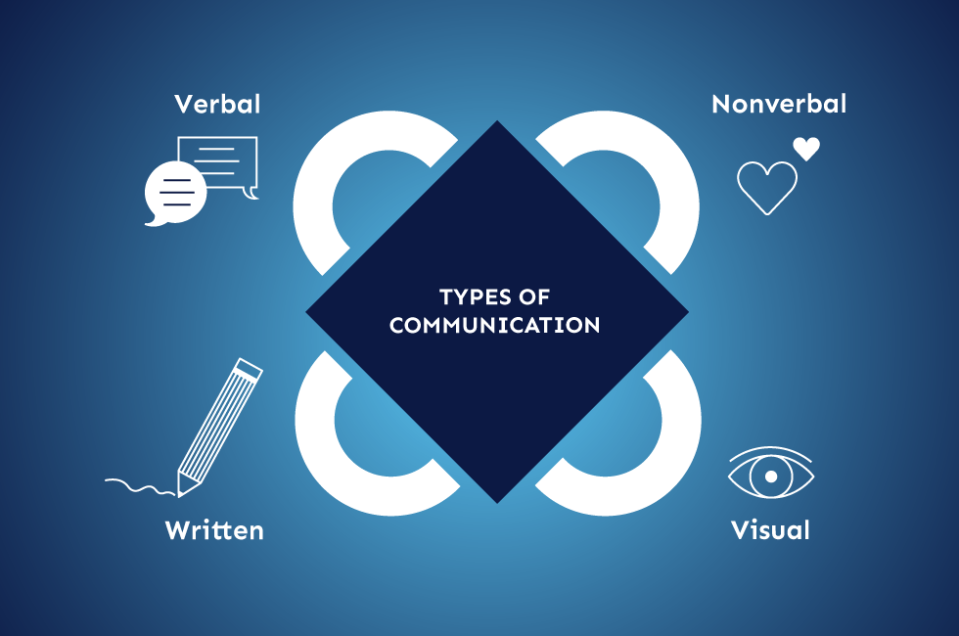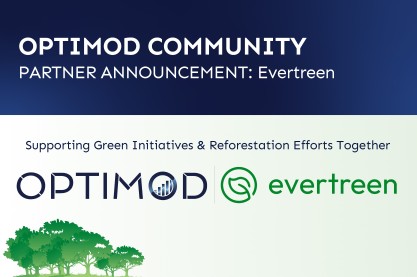Communication, a fundamental aspect of human interaction, plays a crucial role in personal, professional, and societal contexts. In our digital age, technological advances have reshaped the way we connect, introducing both opportunities and challenges, such as privacy and security concerns. Additionally, the diversity of languages globally underscores the importance of cross-lingual communication, fostering understanding and preserving cultural heritage. Effective and empathetic communication remains central to building relationships and navigating human interactions successfully.
OVERVIEW
Communication in business is a cornerstone of organizational success. Effective communication is crucial for conveying information, facilitating collaboration, and fostering a productive work environment. Clear and transparent communication ensures that employees understand their roles and responsibilities, company objectives, and expectations for performance. It enables teams to work cohesively, share ideas, and problem-solve efficiently, leading to increased innovation and productivity. Additionally, a culture of open and respectful communication promotes employee engagement, job satisfaction, and retention, creating a positive work environment. Moreover, it enhances relationships with customers, suppliers, and other external stakeholders, fostering trust and loyalty. In today's global and fast-paced business landscape, the ability to communicate effectively, whether through written correspondence, verbal exchanges, or digital platforms, is a defining factor in a company's ability to adapt, compete, and thrive.
What are 4 fundamental types of communication?
The four main types of communication—verbal, non-verbal, written, and visual—each play distinctive roles in how we convey information, emotions, and ideas in various contexts. These four main types of communication—verbal, non-verbal, written, and visual—all serve as essential tools for conveying information and facilitating understanding in diverse personal, professional, and societal contexts, greatly enhancing one's ability to communicate, collaborate, and connect with others.
-
Verbal Communication:
Verbal communication is the most direct and common form, involving spoken or written words to convey messages. It encompasses face-to-face conversations, phone calls, video conferences, speeches, and written documents such as emails and reports. Effective verbal communication relies on vocabulary, tone, and articulation to ensure clarity and understanding. It's essential in both personal and professional interactions, allowing for direct and immediate exchange of information.
-
Non-Verbal Communication:
Non-verbal communication encompasses body language, facial expressions, gestures, tone of voice, and other cues that don't rely on words. It often conveys emotions, attitudes, and intentions more powerfully than words. Non-verbal communication is crucial in interpreting unspoken messages, understanding a person's emotional state, and detecting nuances in interpersonal interactions. It plays a significant role in situations where words alone may not suffice, such as in negotiations, conflict resolution, or when dealing with individuals who speak different languages.
-
Written Communication:
Written communication involves the use of written words to convey messages. This type of communication is structured, allowing for precise and well-thought-out expression. It includes documents such as reports, memos, letters, emails, and text messages. Written communication is vital for formal records, documentation, and conveying complex information that requires careful consideration. It allows for a permanent record and facilitates communication when parties are not physically present.
-
Visual Communication:
Visual communication utilizes images, graphics, charts, and other visual aids to convey information, concepts, and ideas. It is particularly effective for presenting complex data, illustrating concepts, and engaging audiences in a more visually appealing manner. Visual communication is used in presentations, marketing materials, web design, and other creative endeavors. With the rise of digital media, visual elements have become increasingly important in conveying messages, as they can often transcend language barriers and capture attention more effectively.
How is business communication different from regular communication focusing on these 4 types?
Change is vital in
Business communication differs from regular or everyday communication in that it is tailored to the specific needs and objectives of an organization. While the four key types of communication (verbal, non-verbal, written, and visual) are present in both regular and business communication, they are utilized in distinct ways.
-
Verbal Communication:
- Regular Communication: In everyday life, verbal communication is often informal, spontaneous, and primarily aimed at personal or social interaction. Conversations may be relaxed and less structured, and the choice of words and tone is often guided by personal relationships.
- Business Communication: In the business context, verbal communication is typically more formal, structured, and purpose-driven. It includes meetings, presentations, negotiations, and written documents. Clarity, precision, and professionalism are essential. The tone may vary based on the audience and purpose, but it generally follows a more structured and professional standard.
-
Non-Verbal Communication:
- Regular Communication: In daily life, non-verbal cues often emerge naturally and reflect personal emotions, reactions, and relationships. People may use non-verbal signals spontaneously without conscious consideration.
- Business Communication: In the business world, non-verbal communication is often deliberate and mindful. Professionals pay close attention to body language, facial expressions, and gestures, aiming to convey professionalism and build trust. Understanding and interpreting non-verbal signals is crucial in negotiations, presentations, and team dynamics.
-
Written Communication:
- Regular Communication: Everyday written communication might include casual text messages, social media posts, or emails to friends and family. It can be informal, unstructured, and may include slang or abbreviations.
- Business Communication: Written communication in business is typically formal and structured. It includes documents such as reports, emails, memos, and contracts. Clarity and professionalism are paramount. The content must be well-organized, free of grammatical errors, and adhere to a standard style guide. The focus is on conveying information clearly, professionally, and in a manner that can be referenced or archived.
-
Visual Communication:
- Regular Communication: In regular communication, visual aids may be used for personal or social purposes, such as creating fun presentations, sharing memes, or using emojis in text messages.
- Business Communication: In the business context, visual communication is often employed to convey complex information, make professional presentations, and engage stakeholders. The emphasis is on clarity, relevance, and professionalism. Visual aids are meticulously designed to support the intended message, often using charts, graphs, infographics, and multimedia to enhance understanding.
Overall, the key difference lies in the formality, structure, and purpose of communication in the business world. Business communication places a premium on professionalism, clarity, and alignment with the organization's goals, while regular communication is often more spontaneous and guided by personal relationships and social norms. Understanding these distinctions is essential for individuals transitioning between personal and professional communication contexts.
What is the future of business communication and how do the 4 types fit in?
The future of business communication is undergoing significant transformation due to technological advancements, changing workplace dynamics, and evolving customer expectations. The four key types of communication—verbal, non-verbal, written, and visual—play essential roles in shaping this future landscape.
-
Verbal Communication:
- Future Relevance: Verbal communication remains a cornerstone of business interactions, but its nature is evolving. With the rise of remote and hybrid work models, video conferencing and virtual meetings will continue to play a significant role.
- Importance: The ability to convey information effectively in virtual meetings, where non-verbal cues are limited, becomes critical. Skills in leading remote meetings, active listening, and clear articulation will be valued.
-
Non-Verbal Communication:
- Future Relevance: Non-verbal cues remain essential, even in virtual settings. With video conferencing and remote work, understanding and utilizing non-verbal signals will be even more crucial.
- Importance: The ability to interpret and use non-verbal communication cues, such as body language and facial expressions, effectively in virtual communication will continue to be a vital skill for professionals in the future.
-
Written Communication:
- Future Relevance: Written communication is likely to increase in importance as remote and asynchronous communication becomes more common. Email, project management tools, and written documentation will continue to be central to business communication.
- Importance: Clear and precise written communication, especially in an environment with limited face-to-face interaction, will be crucial. The ability to craft professional emails and documents will remain a valuable skill.
-
Visual Communication:
- Future Relevance: The importance of visual communication will grow as businesses seek to engage remote or dispersed teams and capture audience attention. This includes the use of multimedia presentations, infographics, and video content.
- Importance: The ability to convey complex information visually and to create engaging presentations will be highly sought after. Professionals who can harness the power of visual communication to enhance understanding and engagement will excel in the future.
In the future of business communication, these four types are intertwined and adapted to suit changing needs. The increasing reliance on virtual communication means that professionals must become adept at using verbal and written communication tools to convey information and build relationships effectively in virtual environments. Non-verbal cues, while limited in virtual interactions, still play a role, and the ability to interpret and use them will continue to be important.
Visual communication, particularly in the form of multimedia presentations and video content, will become even more relevant as companies look for ways to convey complex ideas and engage audiences in remote settings. Business professionals who can effectively blend these communication types to suit the demands of the future will be well-equipped to thrive in the evolving business landscape.
CONCLUSION
Effective communication remains pivotal for personal, professional, and societal harmony. The four key communication types—verbal, non-verbal, written, and visual—are essential for conveying information and emotions. Business communication, with its structured approach, relies on these types for success, fostering collaboration and innovation. As we navigate the evolving landscape, these types continue to play a vital role. Verbal communication, non-verbal cues, written communication, and visual aids all contribute to bridging gaps and fostering trust in our ever-connected world.
QUESTION:
What are your thoughts on the subject above? Feel free to post a comment or start a discussion.
TAGS: Effective Communication, Personal Relationships, Professional Success, Societal Harmony, Technological Advancements, Challenges, Privacy, Security, Diversity of Languages, Cross-Lingual Communication, Cultural Heritage, Empathetic Communication, Organizational Success, Conveying Information, Facilitating Collaboration, Productive Work Environment, Employee Engagement, Job Satisfaction, Customer Loyalty, Global Business, Digital Platforms, Verbal Communication, Non-Verbal Cues, Written Communication, Visual Communication, Body Language, Emotional Intelligence, Formal Communication, Remote Work, Virtual Meetings, Email Communication, Visual Aids, Multimedia Presentations, Multicultural Workplace, Data-Driven Insights, Customer-Centric Communication, Cross-Cultural Communication, Sustainability, Social Responsibility, Crisis Communication, Data Security, Transparency, Emotional Connection, Soft Skills, Virtual Interactions, Remote Collaboration, Digital Transformation.




Leave A Comment